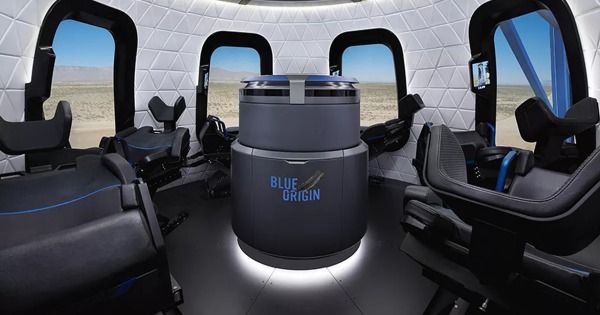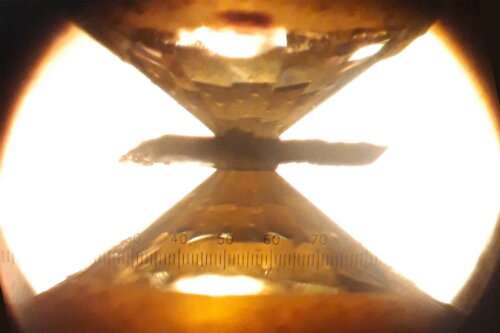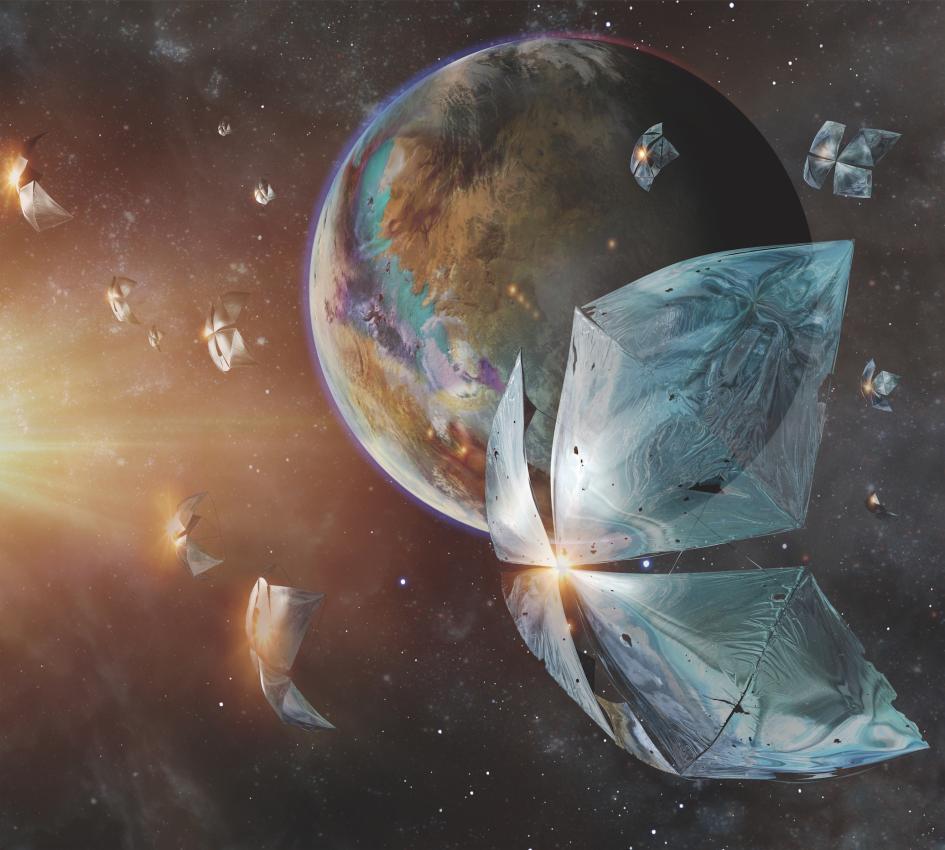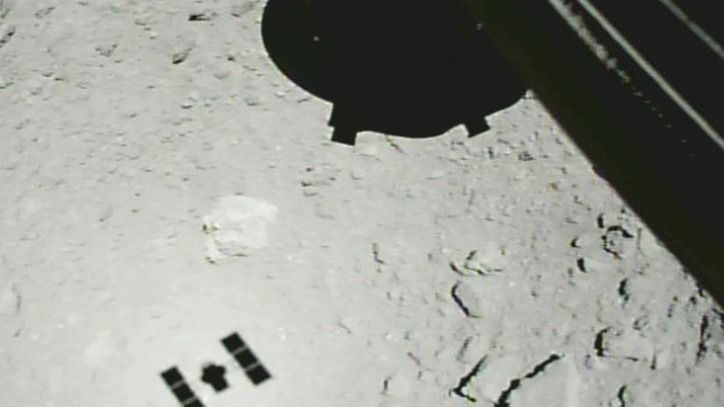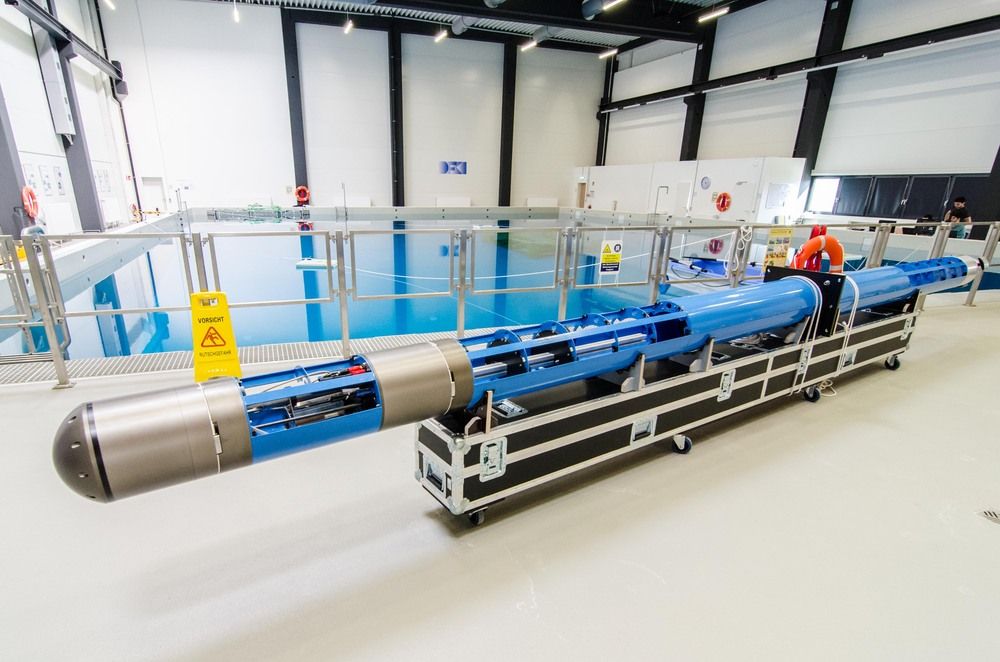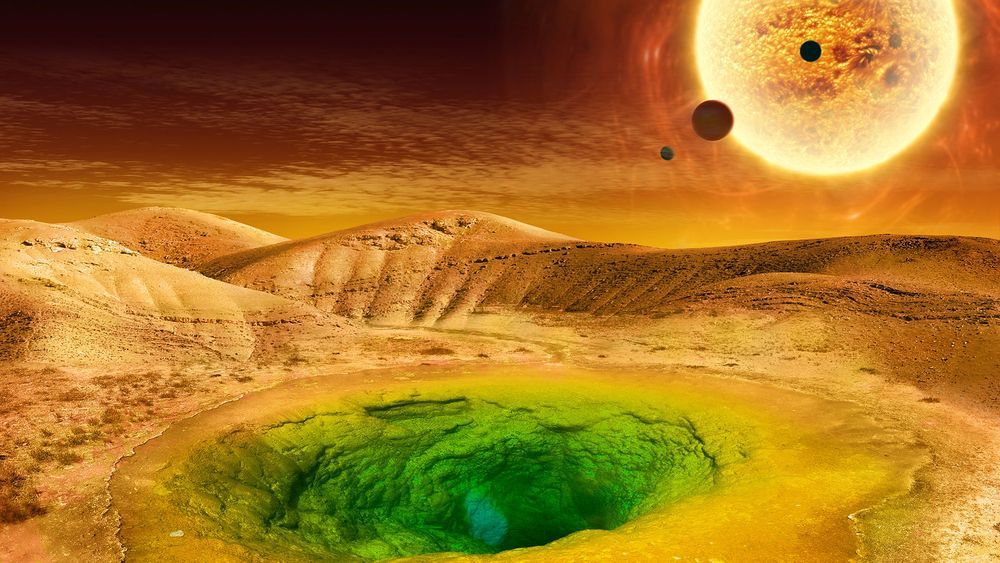Archive for the ‘space’ category: Page 794
Feb 23, 2019
Meet WFIRST, The Space Telescope with the Power of 100 Hubbles
Posted by Genevieve Klien in category: space

WFIRST ain’t your grandma’s space telescope. Despite having the same size mirror as the surprisingly reliable Hubble Space Telescope, clocking in at 2.4 meters across, this puppy will pack a punch with a gigantic 300 megapixel camera, enabling it to snap a single image with an area a hundred times greater than the Hubble.
With that fantastic camera and the addition of one of the most sensitive coronagraphs ever made – letting it block out distant starlight on a star-by-star basis – this next-generation telescope will uncover some of the deepest mysteries of the cosmos.
Continue reading “Meet WFIRST, The Space Telescope with the Power of 100 Hubbles” »
Feb 23, 2019
Jeff Bezos: New Shepard Will Launch First People Into Space “This Year”
Posted by Genevieve Klien in categories: space, transportation
Amazon CEO Jeff Bezos wants to send its first passengers to space as soon as this year. Bezos spoke during a private event at the Yale Club in New York City, Business Insider reports.
“This year. This is the first time I’ve ever been saying, ”this year.” For a few years, I’ve been saying, ”next year,” Bezos told Jeff Foust, senior staff writer at Space News, during the event.
The billionaire’s private space tourism company Blue Origins has been making some big strides towards that goal in recent years. Its flagship suborbital vehicle New Shepard reached the so-called Kármán line (62 miles or 100 km), widely agreed to be the edge of outer space, for the first time during a test flight in 2015.
Feb 23, 2019
Dutch Researchers Just Discovered 300,000 New Galaxies
Posted by Genevieve Klien in category: space

Thanks to The Netherlands-based Low Frequency Array (LOFAR), 300,000 new galaxies have just been discovered.
LOFAR, a massive radio telescope network, was designed to pick up low radio frequencies, which are invisible to other telescopes. Using this method, it found traces of radiation that forms when galaxies are merging.
Continue reading “Dutch Researchers Just Discovered 300,000 New Galaxies” »
Feb 23, 2019
Diving into Earth’s interior helps scientists unravel secrets of diamond formation
Posted by Genevieve Klien in categories: climatology, space
Understanding the global carbon cycle provides scientists with vital clues about the planet’s habitability.
It’s the reason why the Earth has a clement stable climate and a low carbon dioxide atmosphere compared to that of Venus, for instance, which is in a runaway greenhouse state with high surface temperatures and a thick carbon dioxide atmosphere.
One major difference between Earth and Venus is the existence of active plate tectonics on Earth, which make our environment unique within our solar system.
Feb 22, 2019
Life probably exists beyond Earth. So how do we find it?
Posted by Klaus Baldauf in category: space
With next-generation telescopes, tiny space probes, and more, scientists aim to search for life beyond our solar system—and make contact.
Feb 22, 2019
Japan’s Hayabusa2 spacecraft successfully lands on asteroid Ryugu
Posted by Michael Lance in category: space
The Hayabusa2 probe is designed to fire a bullet at Ryugu to retrieve rocks from the asteroid’s surface.
- by
-
Jackson Ryan
Feb 22, 2019
The Rise Of The Silicon Brain
Posted by Marcos Than Esponda in categories: internet, robotics/AI, space
Introduction
The rise of https://www.humanbrainproject.eu/en/silicon-brains/” target=”_blank” rel=” nofollow noopener noreferrer” data-ga-track=” ExternalLink: https://www.humanbrainproject.eu/en/silicon-brains/”>the https://www.humanbrainproject.eu/en/silicon-brains/” target=”_blank” rel=” nofollow noopener noreferrer” data-ga-track=” ExternalLink: https://www.humanbrainproject.eu/en/silicon-brains/”>silicon brain that can give rise to thought, emotion and behavior in a machine seems to be on the way. This is mainly due to rapid advances in software and hardware that are paving the way for next generation computational systems with cognitive abilities modeled after the human brain. This will prove to be a significant evolutionary development and especially important to enhancing https://www.informationweek.com/big-data/ai-machine-learning…id/1331480” target=”_blank” rel=” nofollow noopener noreferrer” data-ga-track=” ExternalLink: https://www.informationweek.com/big-data/ai-machine-learning…id/1331480”>machine intelligence for the complex problems that need to be solved for the future of humanity. So, as we envision a rapidly evolving silicon brain taking in the data from its surroundings in cyberspace, geospace, space (CGS) and run the data through some known/unknown computing processes and then tell the computer/machine to act, feel or behave in a certain way seems to bring humanity a lot more questions than answers. This is mainly because it is not known how the information on the silicon brain will be processed, stored or recalled; how the computer commands will emerge and become effective, and even how the silicon brain will experience the sensory world around it in CGS, and how it will think, feel or empathize.
As we evaluate all these emerging questions surrounding the rise of the silicon brain, there is an intense effort already going on to create neuromorphic chips that can mimic the human brain. There is also an initiative emerging to create a neuromorphic chip based on an octopus brain. While the emerging neuromorphic chips are still nowhere near as capable as a human brain or octopus brain, much is expected to change for machine intelligence very rapidly in the coming years, as these chips begin learning to process available sensory data from CGS to evolve their abilities in real time for the goals defined for them.
Feb 22, 2019
IceShuttle Teredo
Posted by Klaus Baldauf in categories: robotics/AI, space, transportation
An ice-penetrating robotic system to transport an exploration AUV.
TheTeredo IceShuttle is a robotic probe which is capable to transport a payload through an ice-shield towards an environment located beneath the ice. The System is developed in context of the project Europa-Explore r. For that project, a set of robots are developed to model the exploration of the hypothesized ocean on Jupiters icy moon Europa by an analog mission on earth. Within the scenario the IceShuttle transports an autonomous underwater vehicle (AUV) as its payload. (image below)
Feb 22, 2019
New NASA Team Tackles Next Challenges in Detecting Life Beyond Earth
Posted by James Christian Smith in category: space
The question, “Are we alone?” has been a subject of speculation for centuries. The answer may soon lie within the grasp of science.
Decades of research have led scientists to look deeply into the nature of life itself — what it is, how it began on Earth, and what other worlds might also support it. A shift in focus is now emerging as scientists recognize that with a strategic push the possibility of detecting life beyond Earth could be on the horizon.
To support NASA’s growing emphasis on detecting life beyond Earth, NASA’s Ames Research Center in California’s Silicon Valley has established the Center for Life Detection Science. CLDS brings together a diverse group of researchers at Ames and NASA’s Goddard Space Flight Center in Greenbelt, Maryland to tackle the next set of challenges science must overcome to be able to one day detect life beyond Earth.
Continue reading “New NASA Team Tackles Next Challenges in Detecting Life Beyond Earth” »

